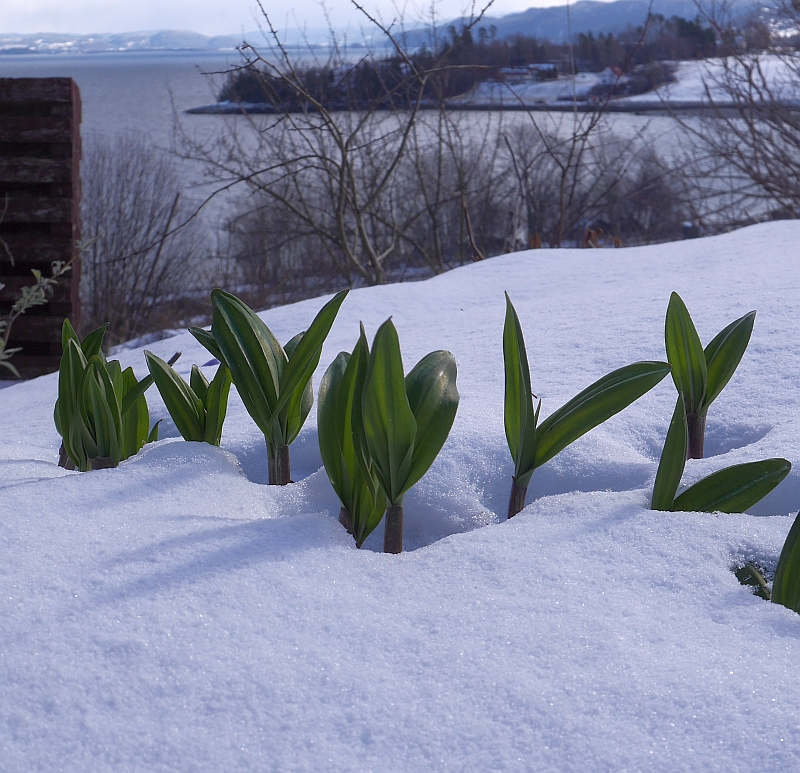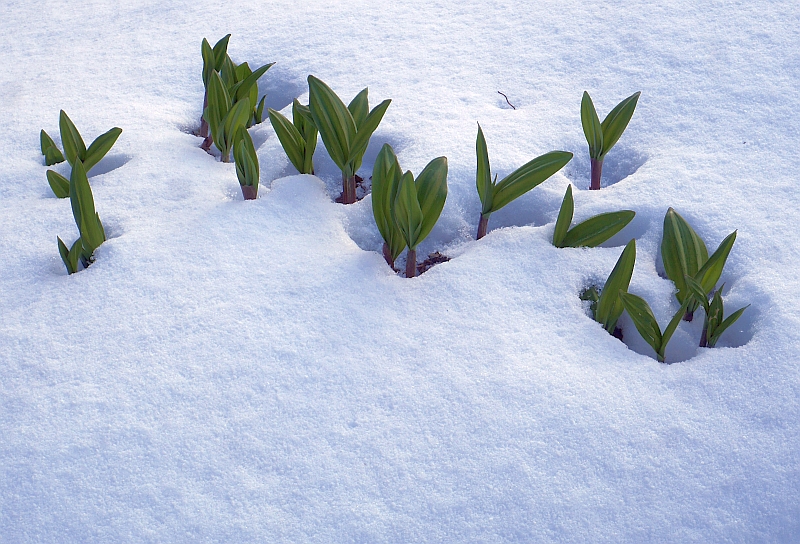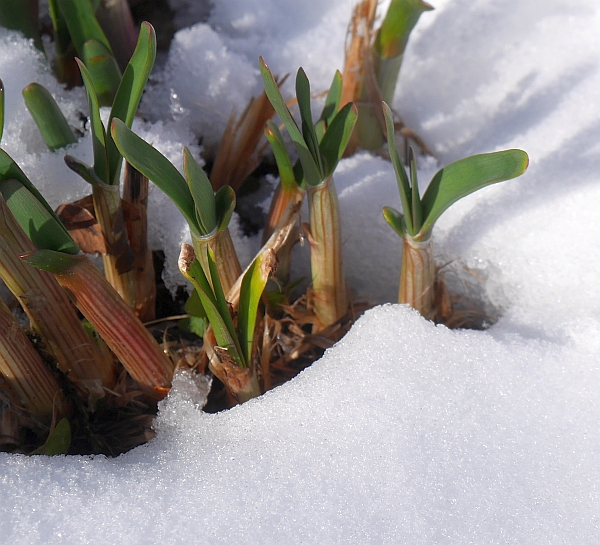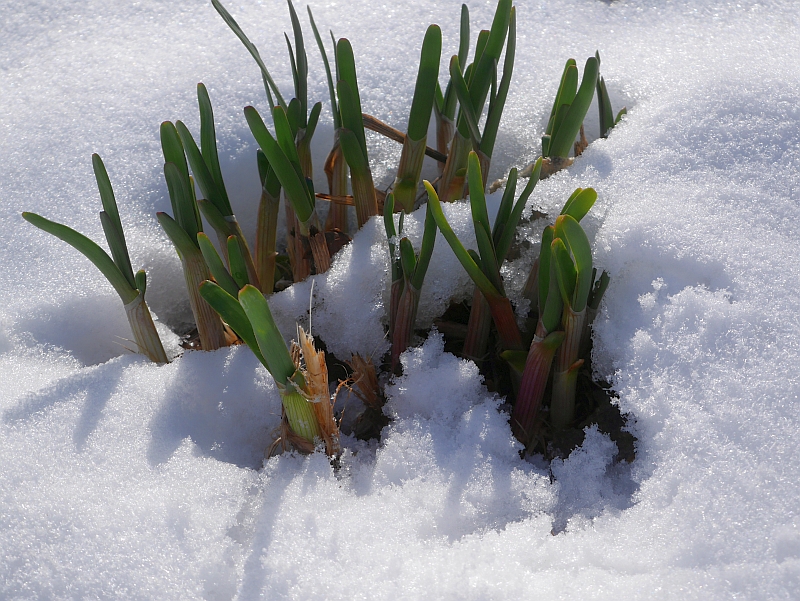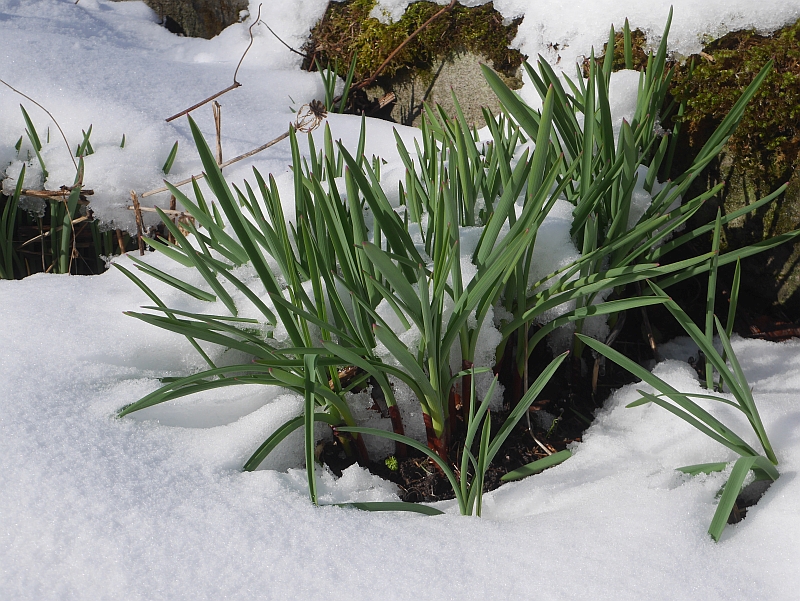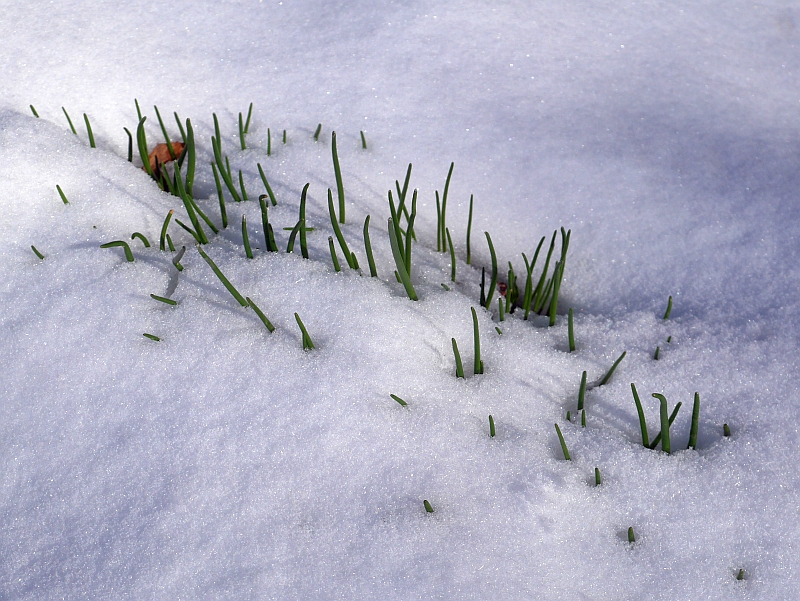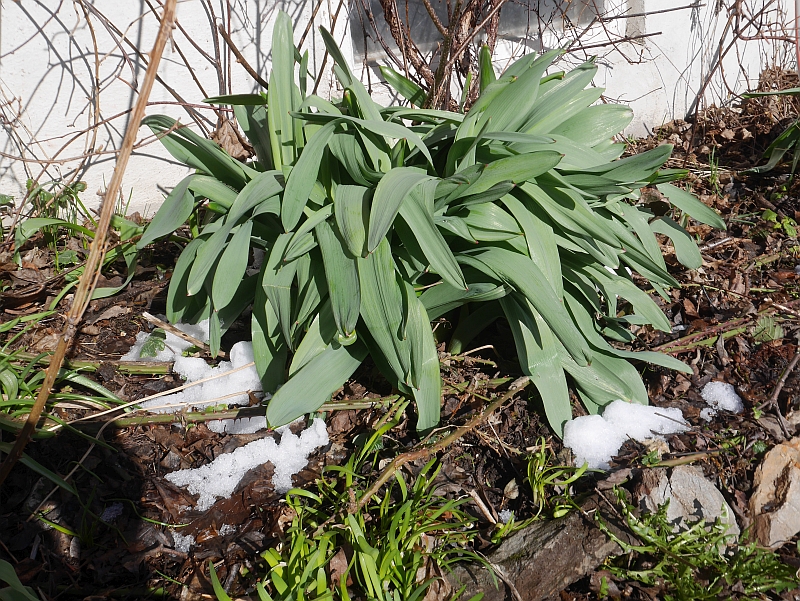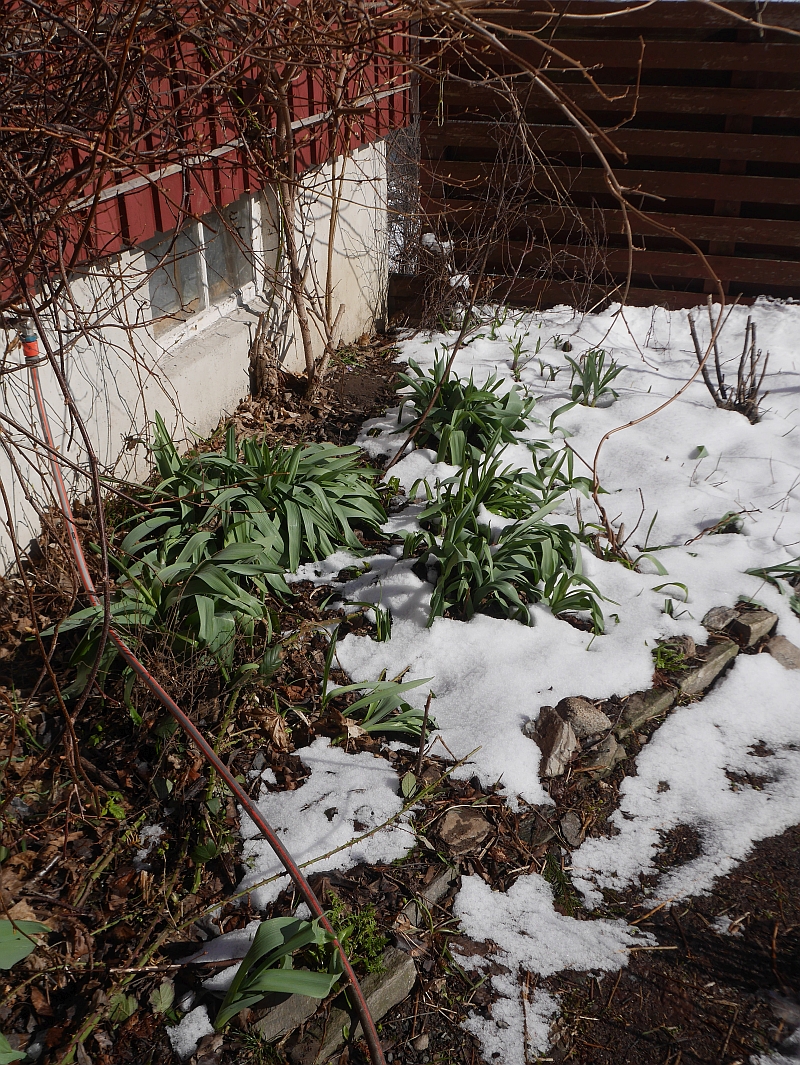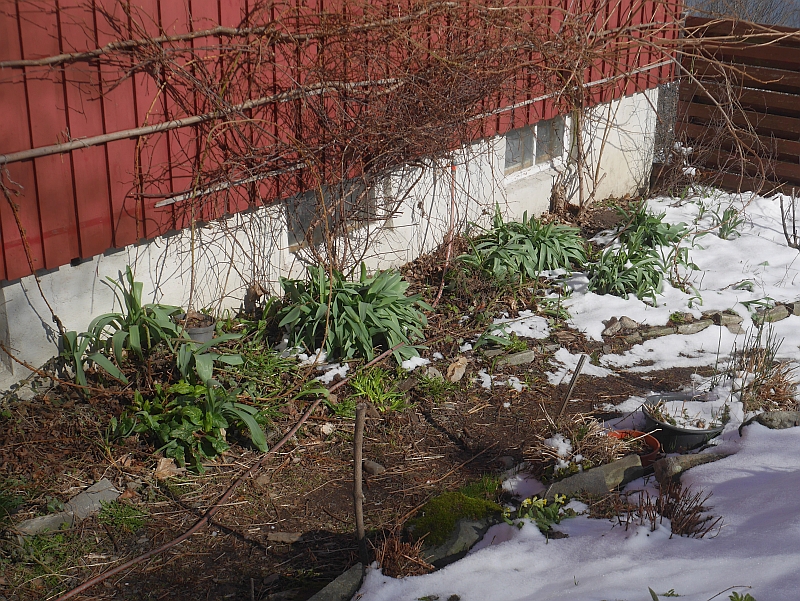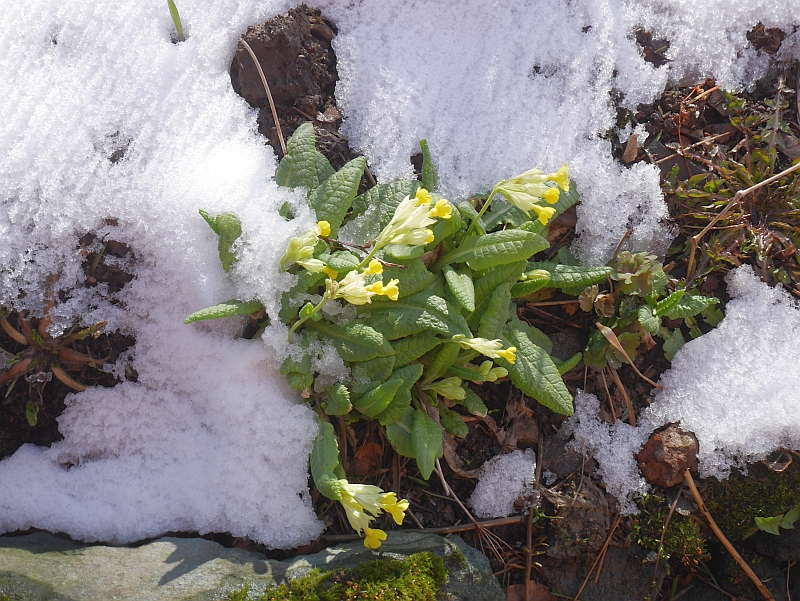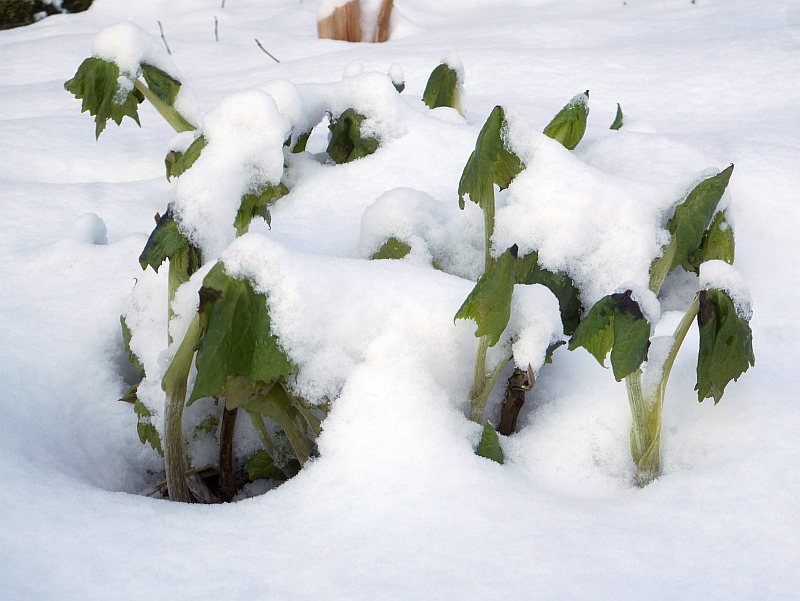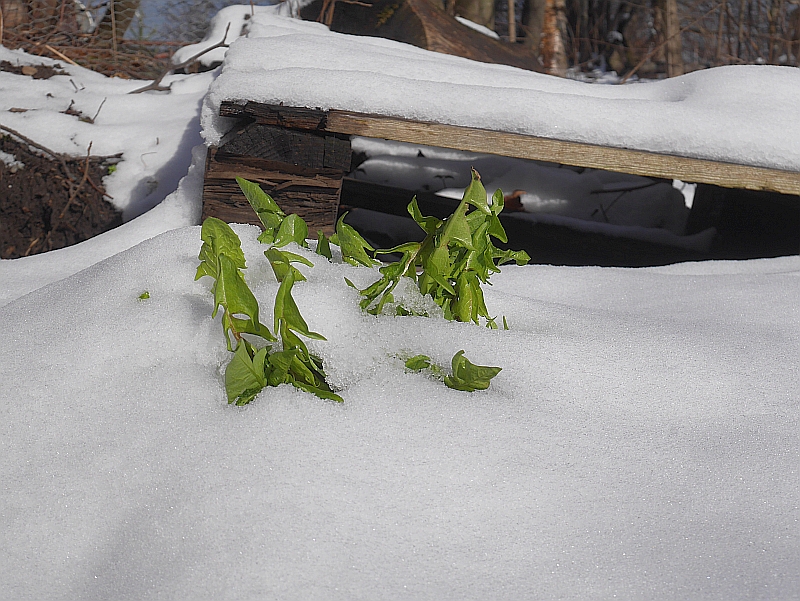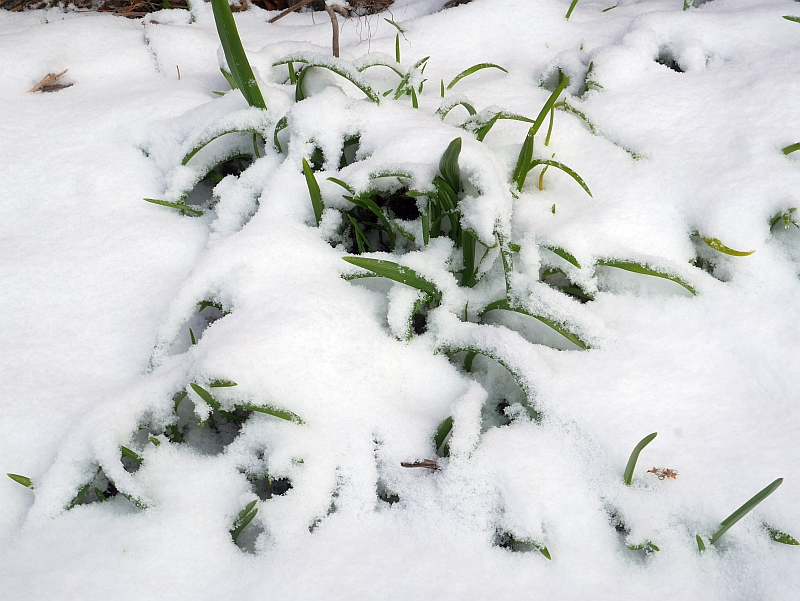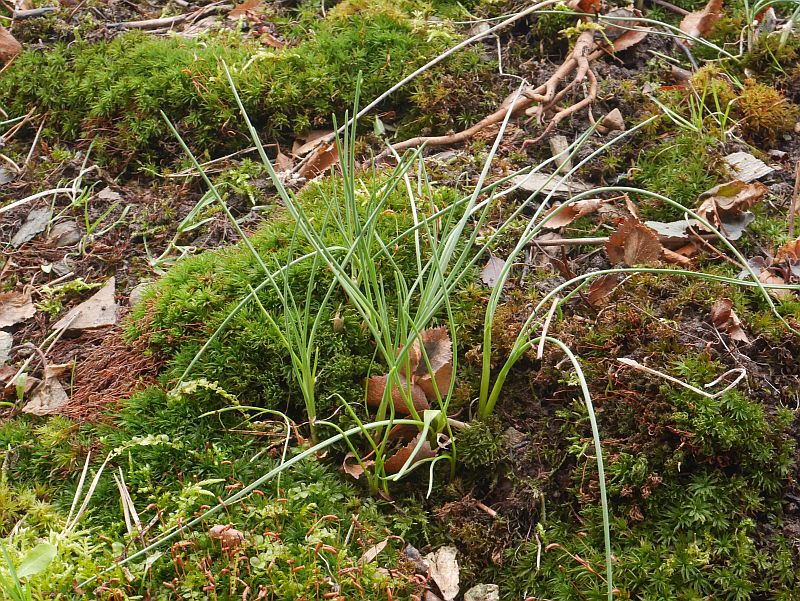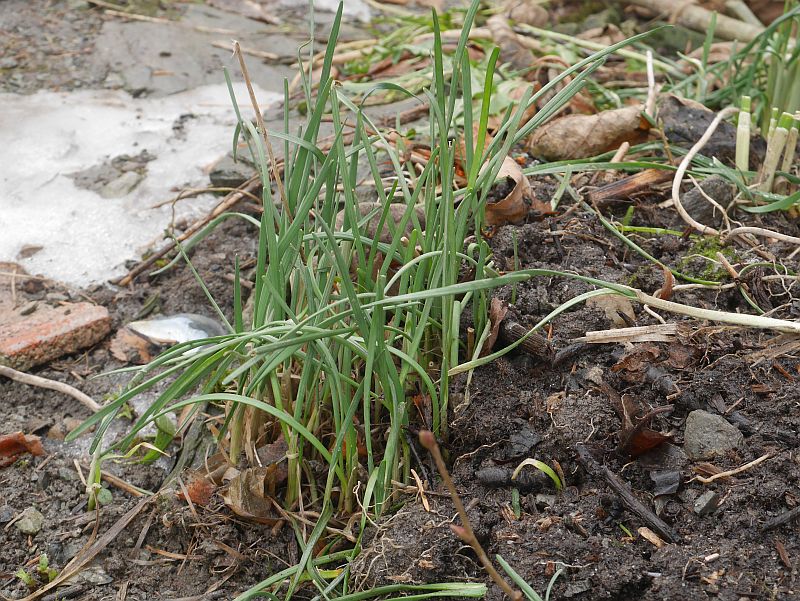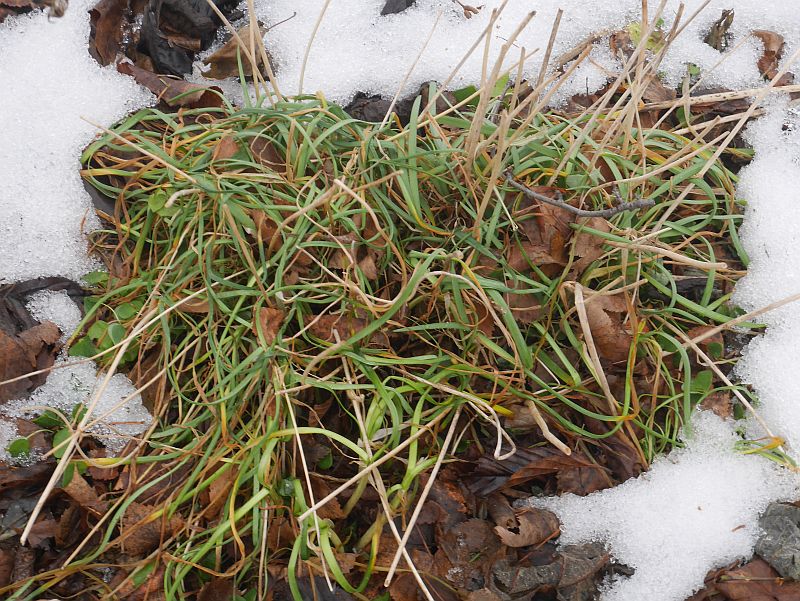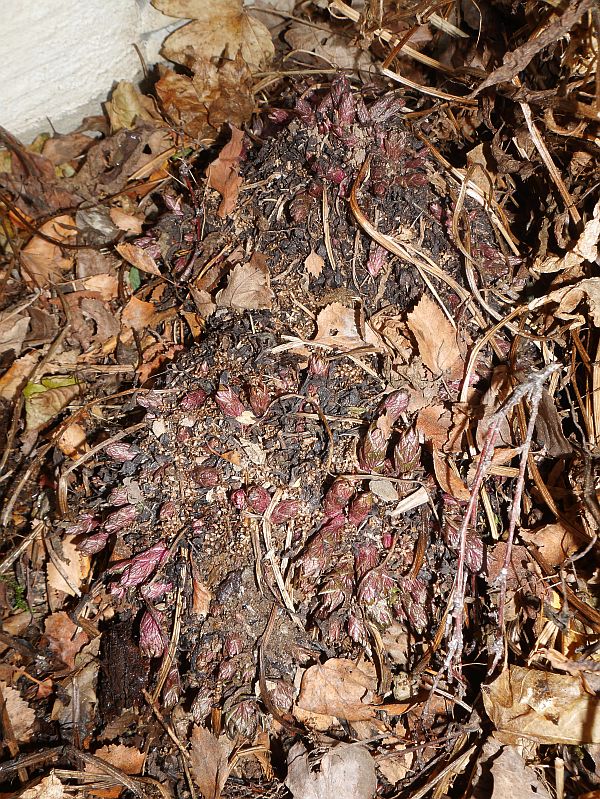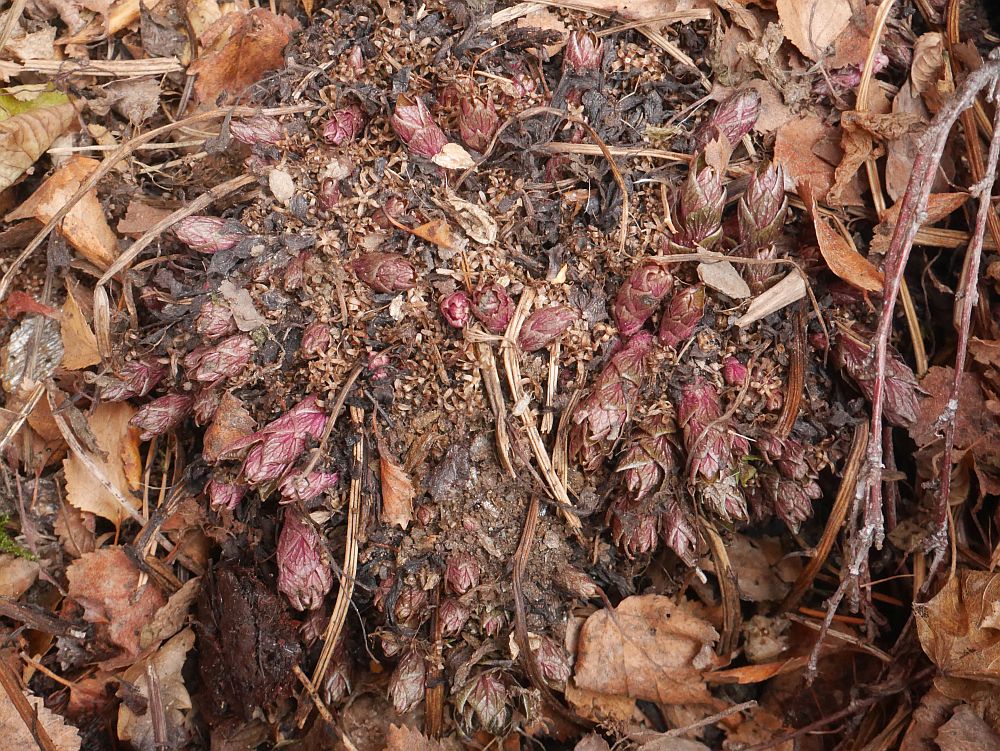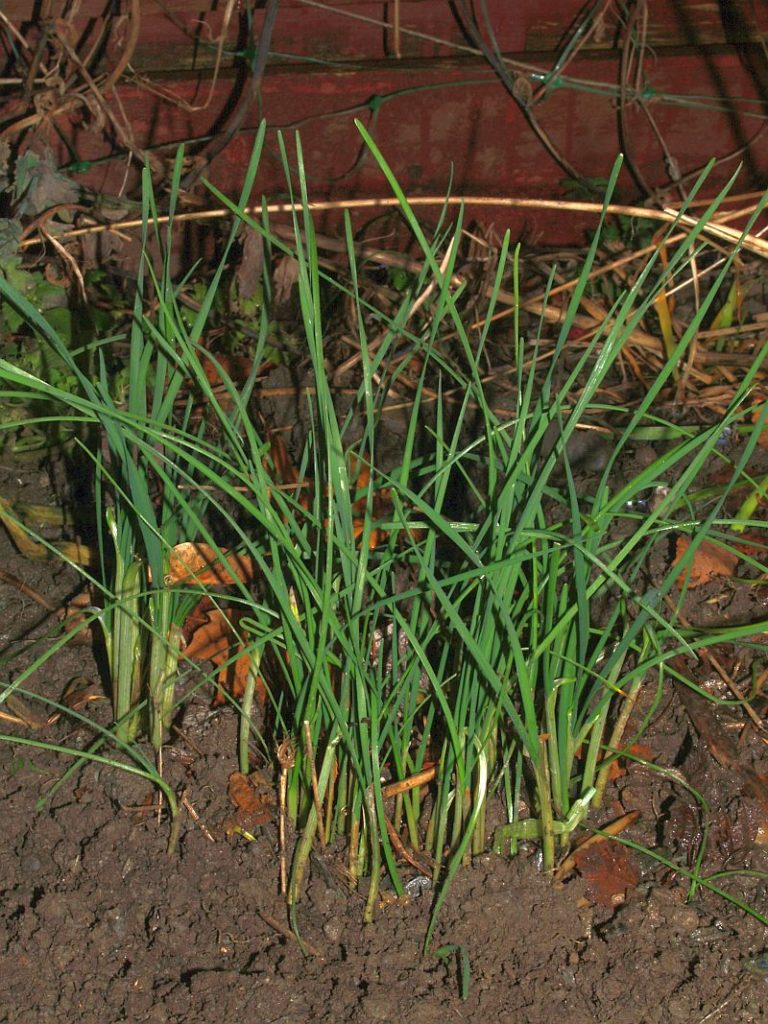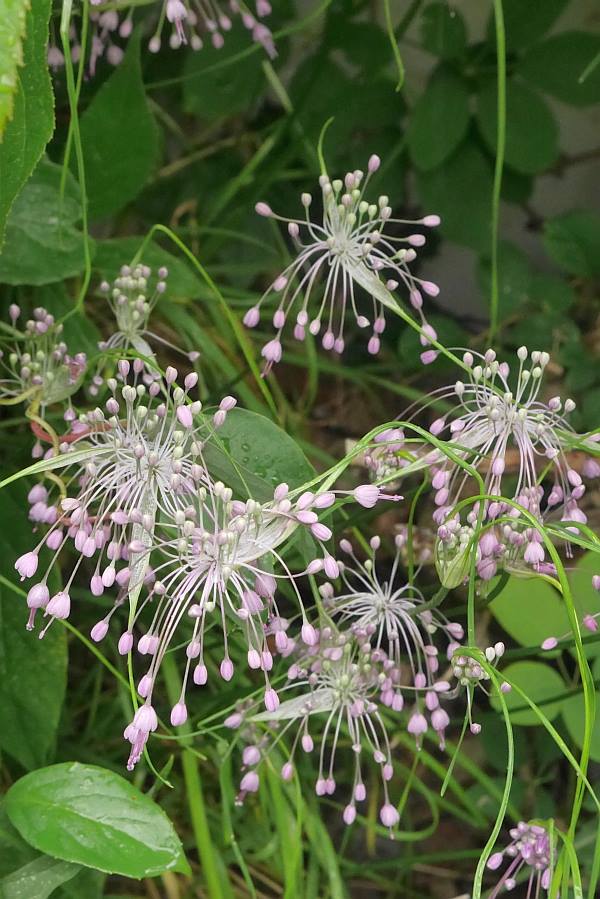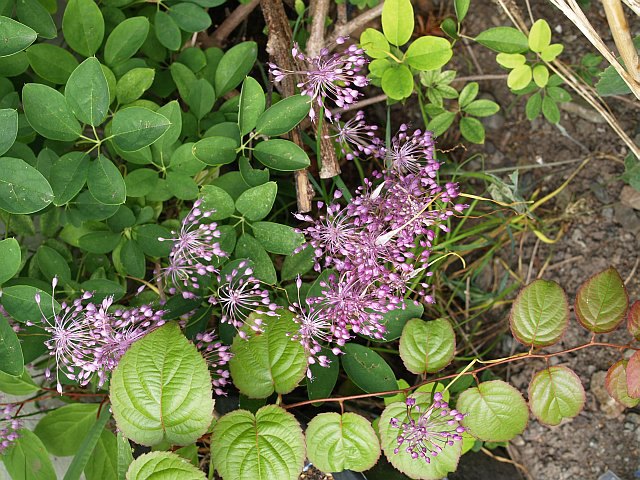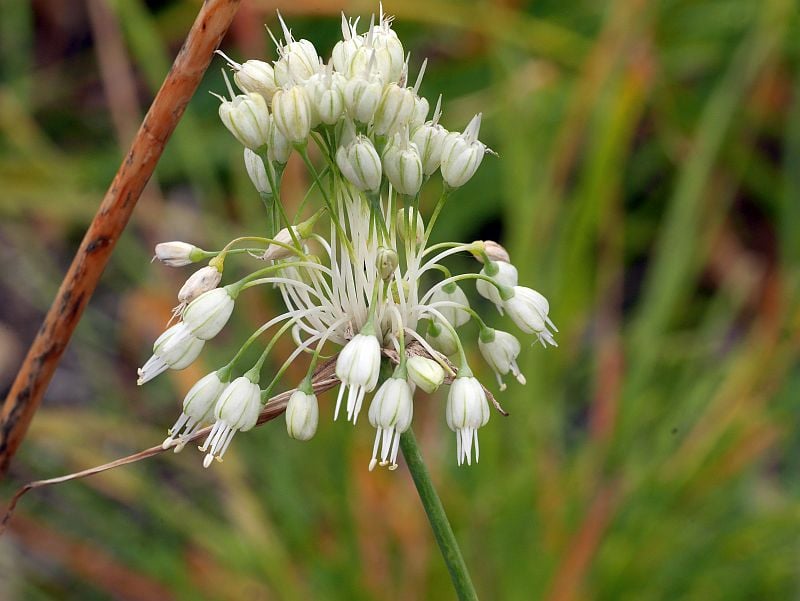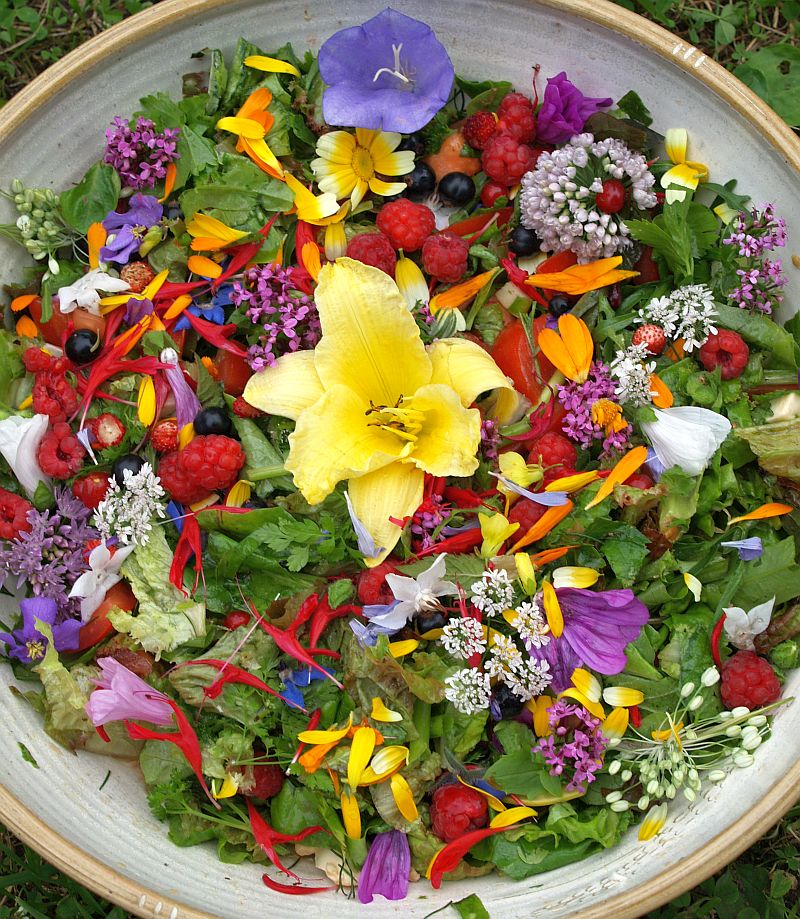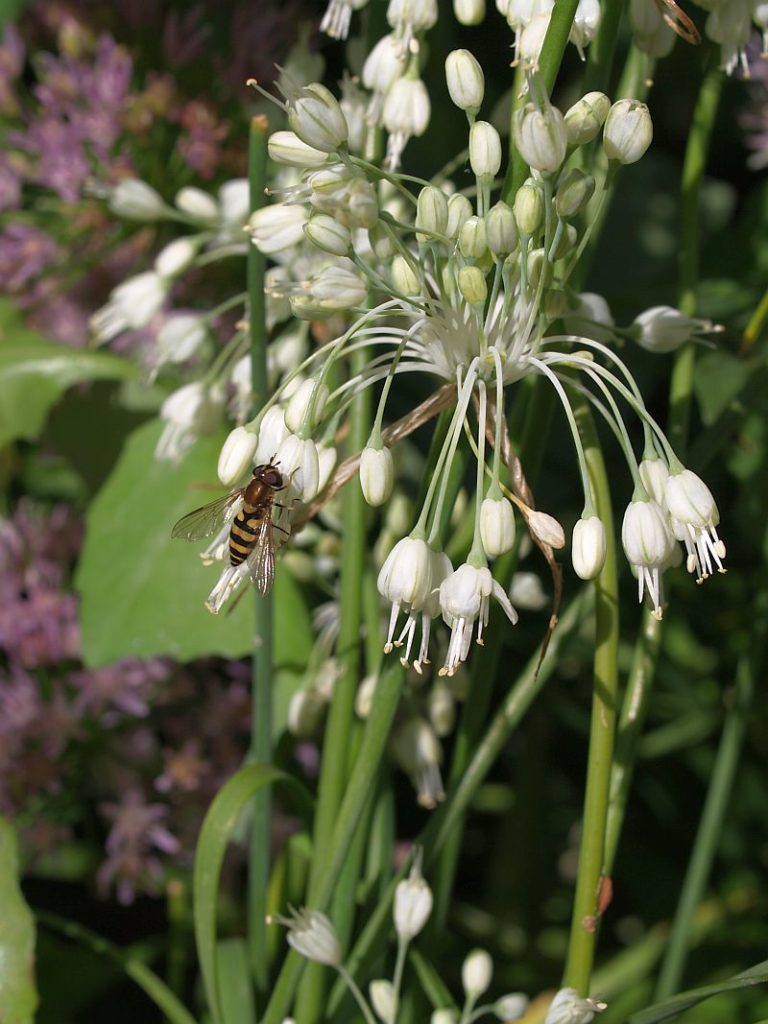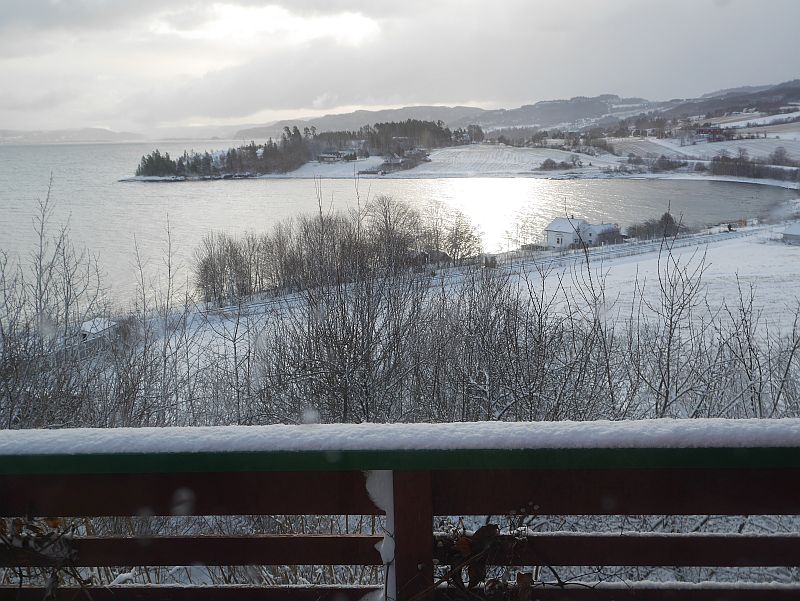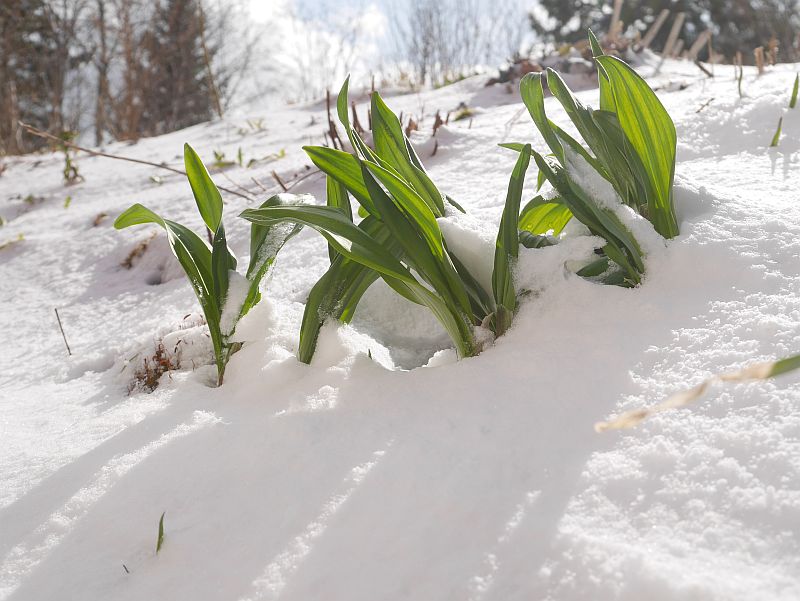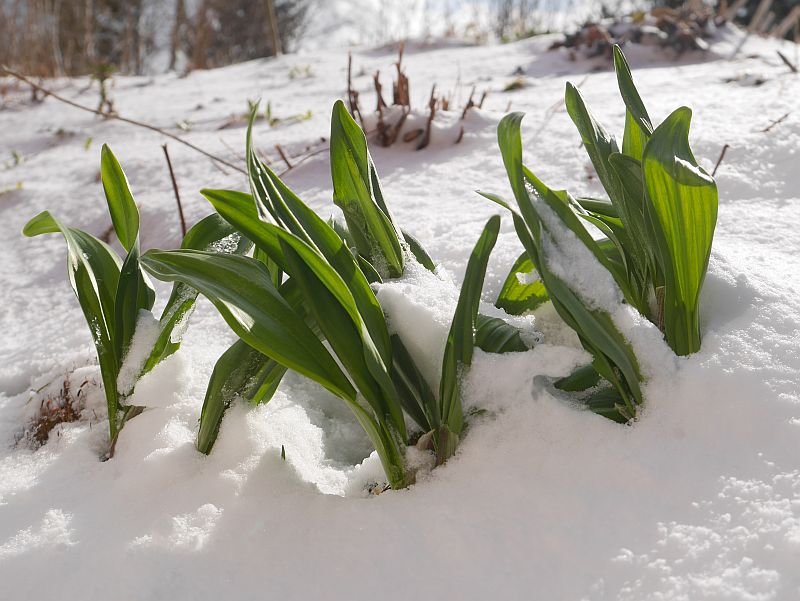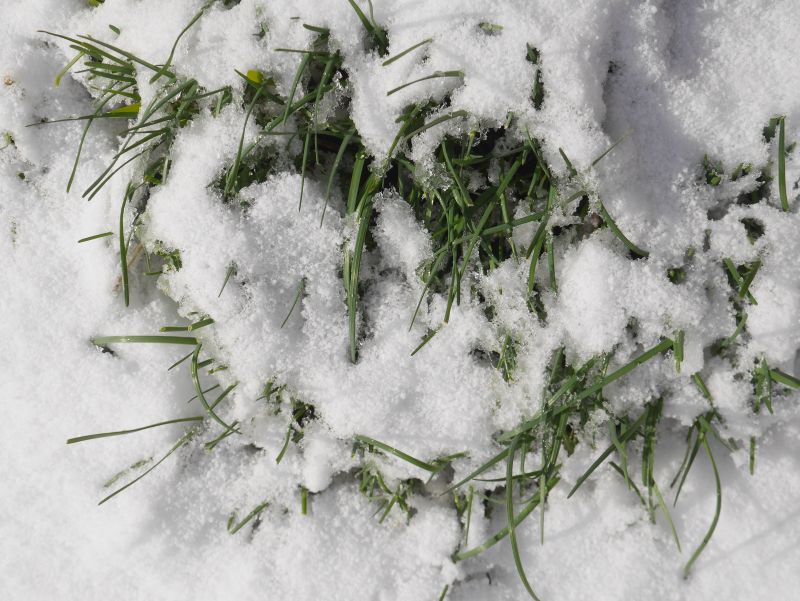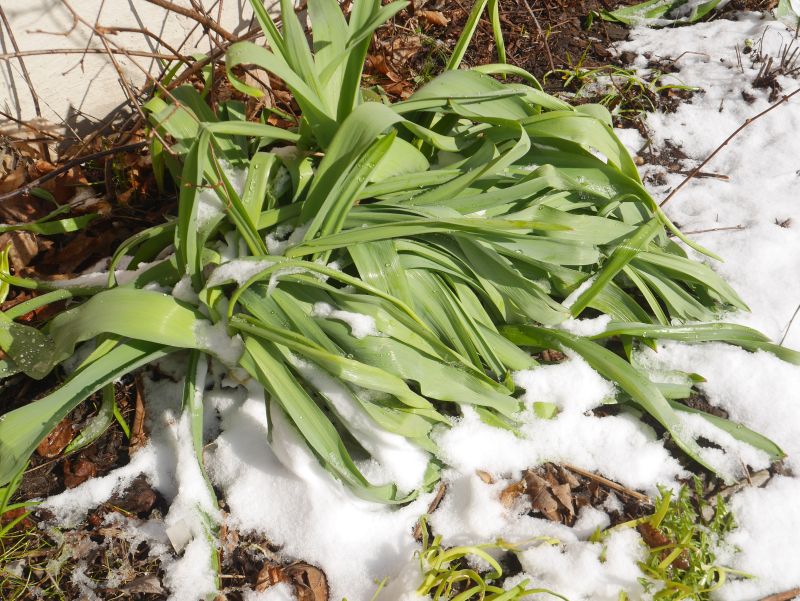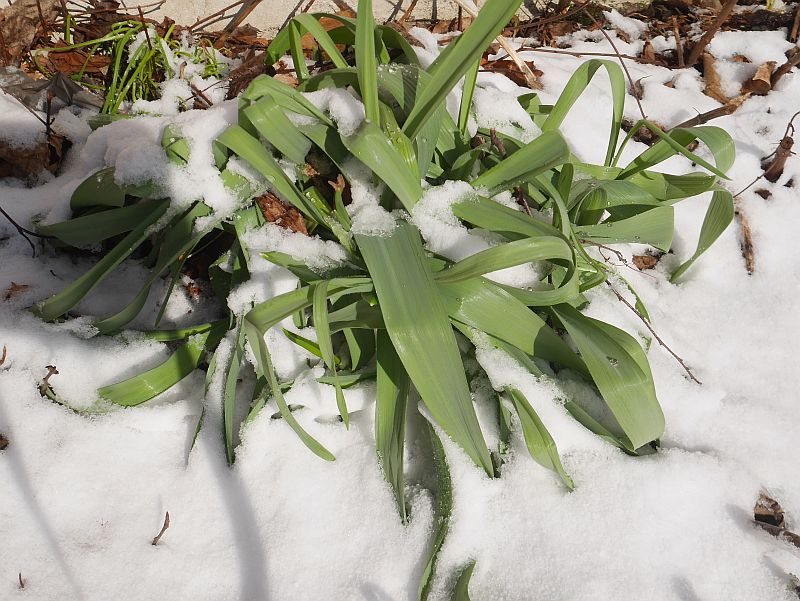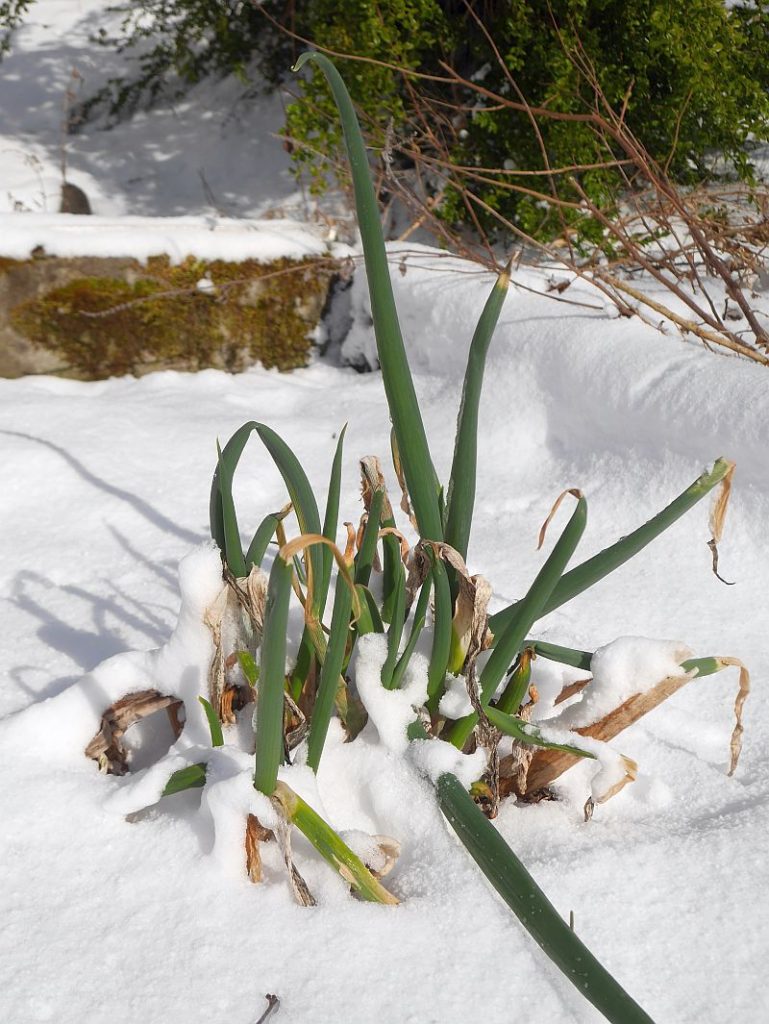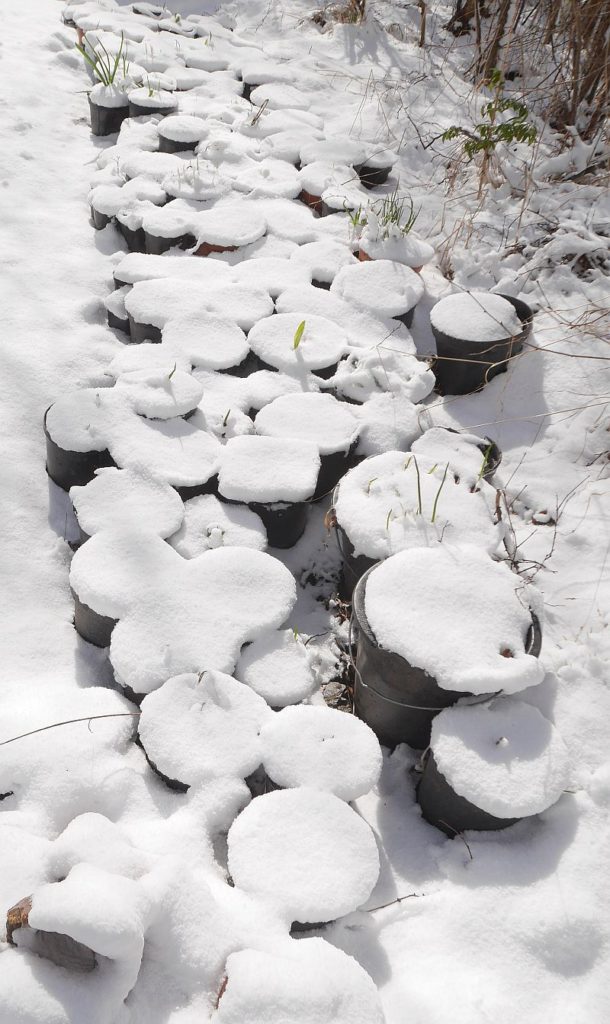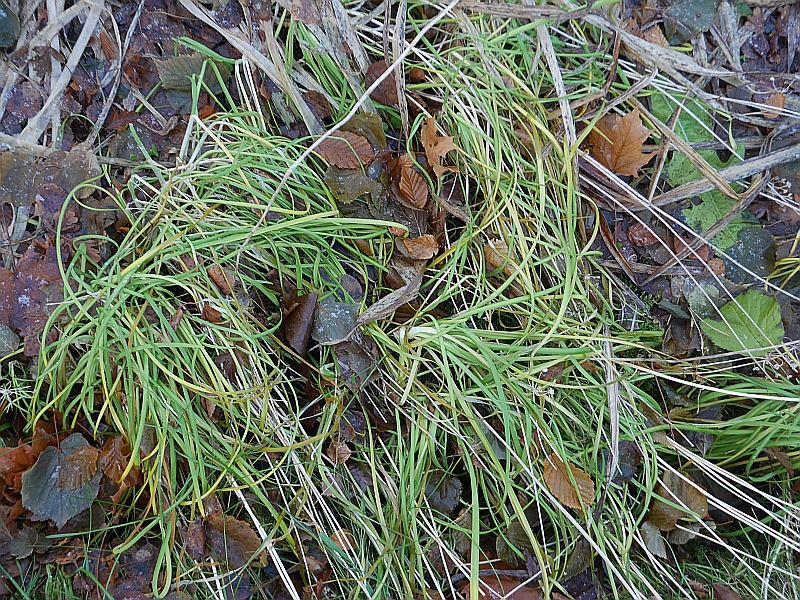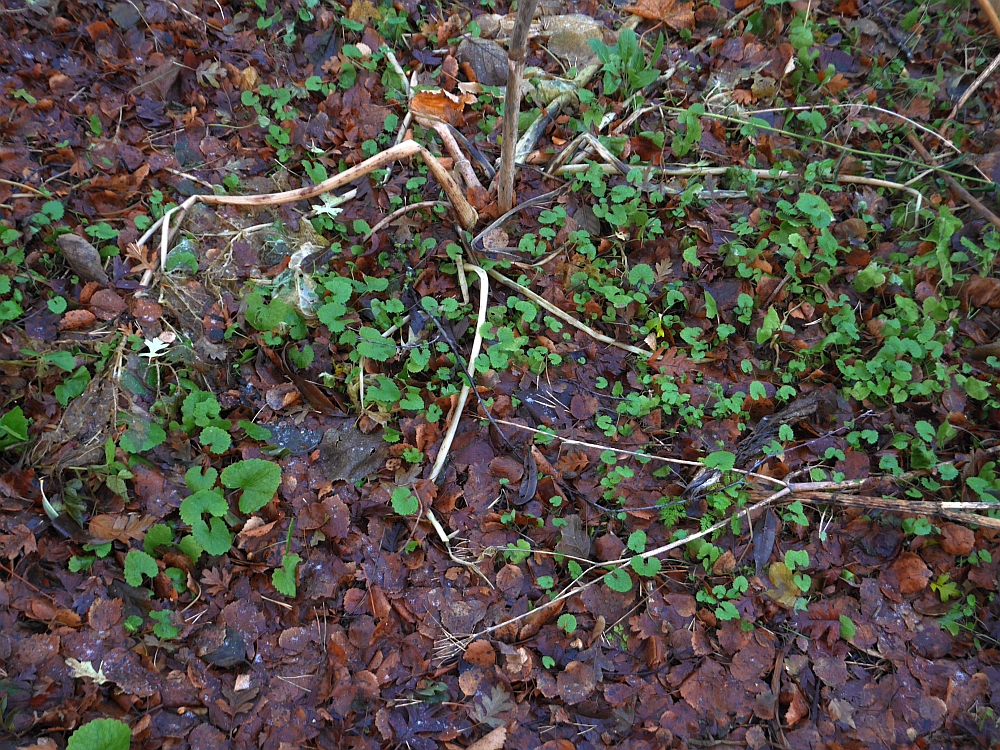

Various Allium species are the hardiest of edible plants either staying green all winter (e.g., Allium cernuum and Allium carinatum) or sprouting very early and able to withstand some frost. With a minimum forecast of -6C tomorrow after a very mild March, it will be interesting to see whether any of these early shooters are damaged. Here are a selection of pictures of Alliums and other early spring shoots in this weeks snow.
Tag Archives: Allium carinatum
Still green after the freeze
Since New Year, only one day had been slightly above zero with temperatures regularly below -15C, but then a big shift in the weather happened a few days ago and it’s now 25C warmer than it was a week ago!
It’s interesting to see how hardy some Alliums are, even when not insulated by snow and here are 3 of the most hardy: Allium carinatum (keeled garlic / rosenløk), Allium flavum (small yellow onion / doggløk) and Allium cernuum (nodding onion /prærieløk) can all be harvested even though the soil is frozen solid. Hablitzia tamnoides (Caucasian spinach / stjernemelde) shoots are also developing nicely and I’ll have a few for lunch today along with the onions.
Keeled garlic, a useful winter Allium and edimental in summer
There are Allium species that can be harvested year round in the garden, notably nodding onion / Norw:prærieløk (Allium cernuum) which I’ve blogged about before. In autumn, new shoots of Allium carinatum subsp. pulchellum (keeled garlic / Norw: rosenløk) appear and with the mild weather we’ve been experiencing they’ve already reached about 20 cm high. They are hardy and can survive to at least -20C. It’s now in the autumn that this edimental Allium is most useful. I use the shoots in a similar way to chives (Allium schoenoprasum), which died back some time ago and won’t reappear until spring (unless I force them indoors), in salads, cut and sprinkled on sandwiches, in scrambled egg, quiches etc. I use them from October to April.
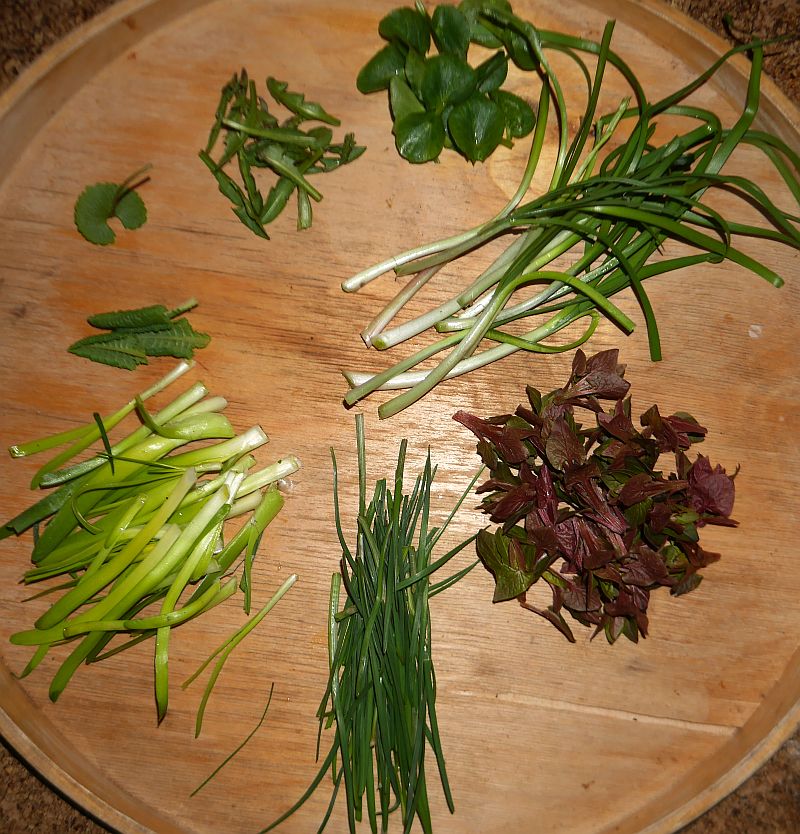
There are two colour forms, pink and white which are particularly valuable as they last such a long time and are popular with pollinators:
There are also forms with bulbils which can be a bit invasive:
You’ll see the flowers used as a tasty decoration in my multi-species salads (bottom right in the picture):
Allium carinatum is also popular with pollinators:
Quinoa greens
Tonight’s 22 greens from the garden with yacon used in a quinoa stir-fry (with garlic and chili in addition):
Brassica oleracea (perennial kale / flerårig kål)
Hydrophyllum virginianum (waterleaf, indian salad)
Tragopogon pratensis (Jack-go-to-bed-at-noon / geitskjegg)
Angelica spp. (kvann)
Allium carinatum
Allium ursinum (ramsons / ramsløk)
Primula elatior (oxlip / hagenøkleblom)
Hablitzia tamnoides (Caucasian spinach / stjernemelde)
Carum carvi (caraway / karve)
Myrrhis odorata (sweet cicely / spansk kjørvel)
Polymnia edulis (yacon)
Urtica dioica ( stinging nettle / brennesle)
Campanula latifolia (giant bellflower / storklokke)
Ficaria verna (lesser celandine / vårkål)
Rumex acetosa (sorrel / engsyre)
Dystaenia takesimana (giant Ulleung celery)
Hemerocallis spp. (day lily / daglilje)
Taraxacum spp. (dandelion / løvetann)
Rheum ribes
Armoracia rusticana (horseradish / pepperrot)
Allium nutans
Aegopodium podograria (ground elder / skvallerkål)

Onions in the snow
Several Alliums are extremely hardy and can stand green all winter even when exposed to temperatures under -20C. Similarly, young leaves of species that start to sprout in early spring as soon as the frost disappears near the surface have no problem with snow and frosts. Here are a few after yesterday’s snowfall!
Snow harvest
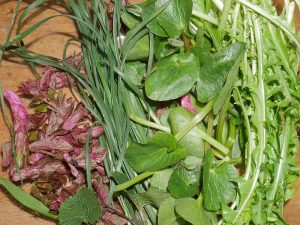
Hablitzia tamnoides, Allium carinatum, Ranunculus ficaria var chrysocephalus (lesser celandine / vårkål), Alliaria petiolata (hedge garlic / løkurt) and (forced inside) dandelions (løvetann)

